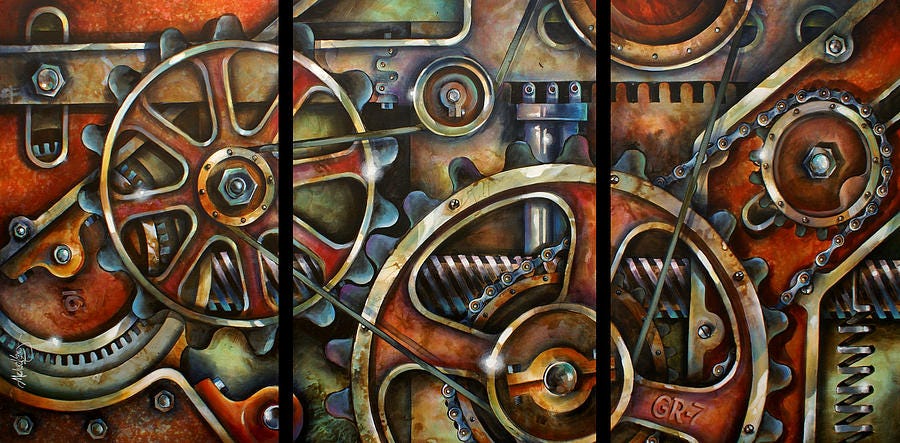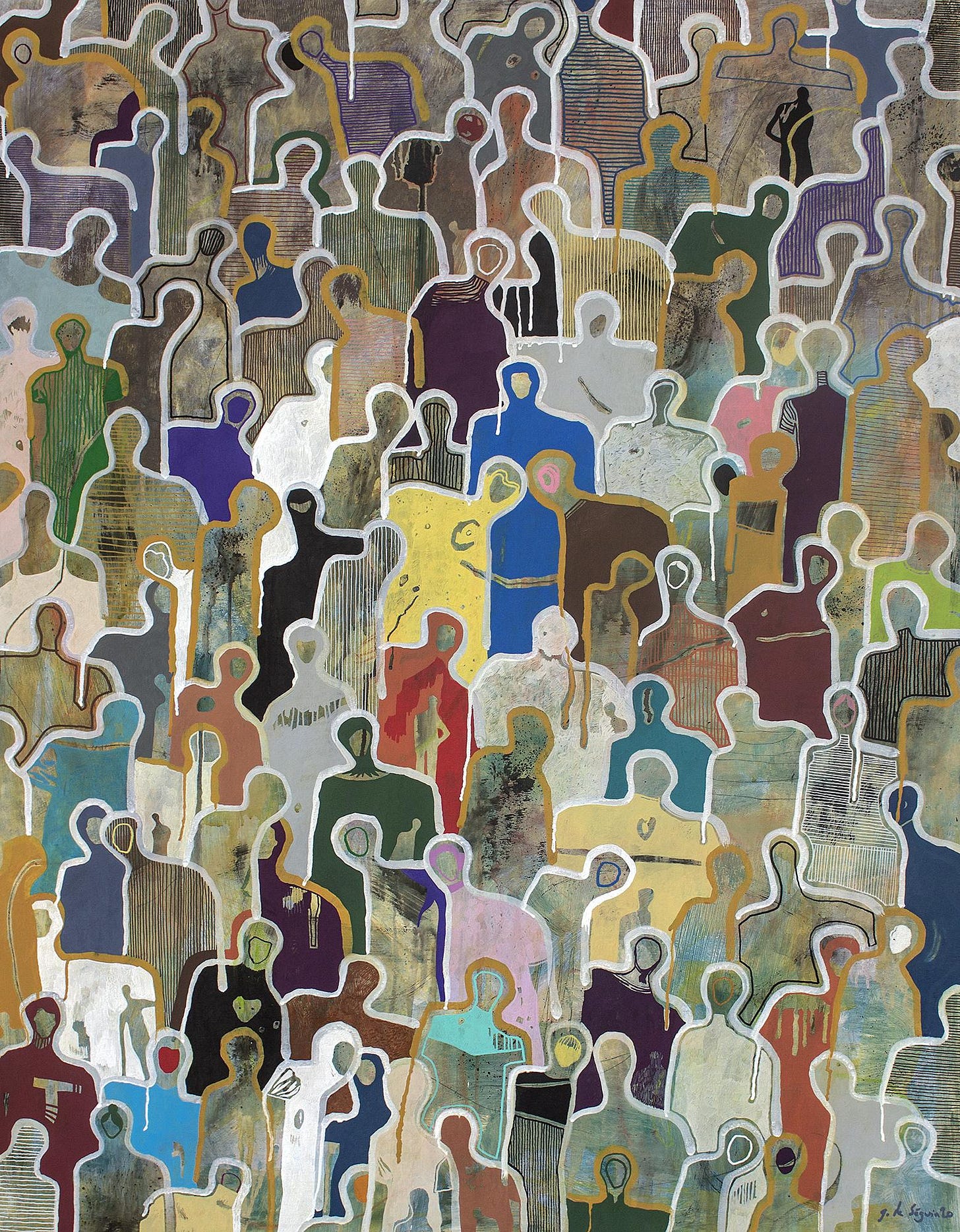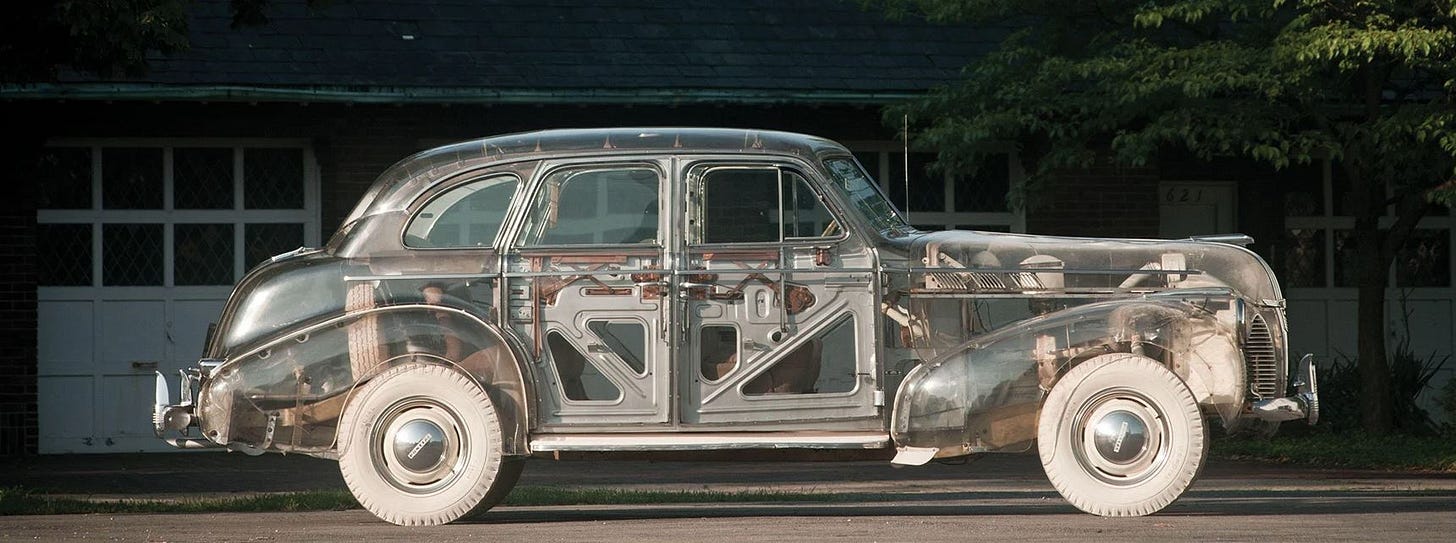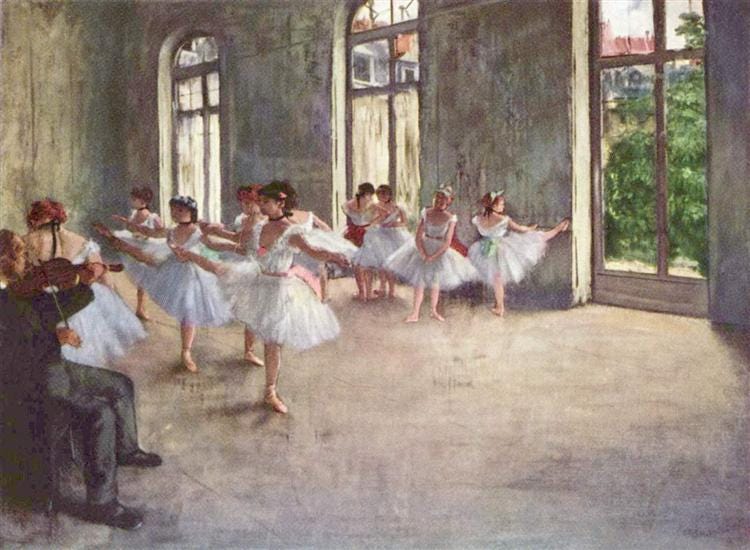Theory Thursday
Hi there, and welcome to Engineering Our Social Vehicles. I’m your host, Paul Logan. Today is Theory Thursday! If you’re new to the newsletter, that means that on Thursdays around these parts we like to dive deep into theory. It’s a special day because it’s always exciting when someone says the name of the thing in the thing. Without further ado: What are social vehicles, anyways?
Stories
There is a narrative weft that underlies all things in human life. Conscience, the story you tell yourself. Community, the story we tell together. Country, the story we tell the world. Culture, the metastory.
Though they seem innocuous, stories grease the material gears that chew up the world and spit it out. They are how we make sense of the work we do with our hands and mouth and feet and why we do them. Though they influence the material world and require it to hold their information, stories are not bound by material reality. A story can be wrong; a rock cannot.
Place a napkin from the dining table onto your lap and you are telling yourself and those around you the story of politesse, a thousand year story that has outlived every human who has ever told it, and will outlive you. Do the same in another culture, and you may only be telling a story to yourself. This isn’t because that culture lacks politesse; it’s because you have a different narrative of manners than those around you. A story can be invisible despite sitting in plain view; A rock cannot.
Material and Information
We are mid transition from a race of manipulators of stone and wood and metal into a race of narrative weavers.
Via engineering and technology we bind stories to material consistency: this is the story of the control flow, this is the story of thermodynamics, this is the story of executable code.
Via law and bureaucracy we bind stories to narrative consistency: this is the story of property taxes, this is the story of the bill of rights, this is the story of judicial review.
Via science, history, and philosophy we bind the metastory: this is the story of discovering stories, this is the story of stories, this is the story of their value.
We are poor weavers, and our binds rarely hold. This is not for want of effort, but because the threads themselves writhe and shift as snakes. A story can be mistold, misunderstood, or misread; A rock cannot.
Every story has a teller, and every teller is beholden to material wants, in service of which they may warp the narrative. Stories themselves cannot want. They are constrained by one simple fact: be. Be told. Be remembered. Be relatable. If a story is none of these things then it ceases to be.
This is selection. There is fitness in transmissibility of narrative— compulsive thoughts that dominate a psyche, rumors that shoot through communities, whole bodies of lies that make up political platform.
There is also fitness in applicability of narrative information to the material world, as opposed to virality. Relativity better explains the world than newtonian physics, the airplane becomes central to modern warfare via strategic importance, 12ft.io becomes popular because it is convenient.
Solidarity
Stories achieve greater fitness through solidarity. Like their hosts, they aggregate, conglomerate, agglutinate. This is SCP. This is a physics textbook. These are the Vedas.
Though humans may attempt to pen stories together, they do not make for easy husbandry. The most fit and wily narratives end up in unexpected, unintended places. Material havoc unfolds as simple narratives grow complex- this is the story of Jean D’arc, this is the story of Muhammad, this is the story of Q.
Vehicles are made from hundreds of moving pieces, many extraneous to the central function of transportation. So too with culture and ideology; as stories cohere, the valid and useful intermingle with the extraneous and insipid, and become difficult to separate out. This is a wive’s tale. This is a stereotype. This is fake news.
I like the husbandry metaphor, and a better name for social vehicle might have been social animal. SV’s do indeed represent informational life in a very macroscopic sense. However, we are surrounded by stories- their information determines the fabric of our daily lives. Our societies and cultures are vehicles that transport us further than our feet could ever walk; simultaneously, they are cages that bind us- not unlike the cabin of an airplane or car. Vehicles have passengers and direction, animals do not. Hence the term “social vehicle.”
Social vehicles
Disclaimer (word choice): From here on out I drop the story/narrative metaphor and refer to the nonmaterial as information.
Social vehicles are informational solidarity groups which exhibit top-level hierarchical selection. In order to do this they must exhibit these qualities:
Have information and individuals as passengers.
Maintain homeostasis for body of constituent information.
Codify rules for operation.
Posses a human material body that acts on an informational body.
Be directed by a central ideology or general philosophy.
In The Cultural Microbiome I alluded to the idea of hierarchical cultural selection restricting competition between ideas and limiting the spread of ideas by their social container, not their transmissibility or applicability. The story of heliocentrism is a famous example; despite being factually correct and experiencing frequent independent discovery, it was resisted culturally until the dominant narrative of the Catholic Church began to wane.
Example: The Catholic Church
The Catholic Church is a good example of a social vehicle. Its culture is a collection of thousands of years of practice, history, and story. It maintains homeostasis by persisting those narratives despite their archaism. It has a set of rules by which it enforces its own coherence and perpetuation. It has a material body that acts out the will of its cultural body. All of this supports a central ideology that is the primary purpose and passenger of the vehicle.
Informational life does not share the clean bounds of its hosts. Tim and Linda do not blur into one another as the Catholic Church and Roman Empire did. To think about the landscape of society through the lense of social vehicles, we must not lean heavily on physical metaphor. If we could visualize SV’s they would seem to share organs and limbs and to split and reform freely.
It is difficult to draw the line between a social vehicle and a set of related ideas being pushed by a group. The true confound is that in the style of 1001 Nights, vehicles may contain other vehicles. This appears to violate the statement that vehicles must exhibit top-level hierarchical selection, so we have to turn to material body to explain.
Biological organisms are not a good analogue for social vehicles, but at times can provide useful metaphor. Imagine a near-term baby inside of its mother. Though in most cases the death of the mother would kill the child, there exist edge cases in which it is possible for the mother to die but not the baby. The baby is a passenger in another human and benefits from that human’s action and homeostasis, but can and will exist independently and perform the same functions for itself. Social vehicles can nest in much the same way. The destruction of a vehicle will not destroy its individual components, but open them to selective forces. The Catholic Church was a passenger of the Roman Empire, but continued on its own when its larger vehicle failed.
The Catholic Church now exists in thousands of different outposts with their own levels of organization that reside in individual cultures. All of these outposts exist in the larger container of the global church, yet are simultaneously their own entities that could survive independently upon schism. This remains true from the global level, to the episcopal conferences, to the ecclesiastical provinces, to the diocese, to the parishes themselves.
Self & change
Last week I published an article on the idea that self is informational life in symbiosis with homo sapiens. In that article I alluded to the idea of Freud’s superego being an outcropping of “hive” social intelligence. One of the ways social vehicles perpetuate is by controlling the information their passengers are reared on to ensure a superego borne of the central controlling ideology of the SV.
By instilling all individuals raised within a vehicle with a set of societal values intrinsic to core ideology, vehicles promote solidarity and cooperation among members. Individual identity and sense of self are staked on those values and on belonging to the larger group. Ingroup and outgroup dynamics form based on the cultural values imprinted by the SV, which serves as a sort of social checksum to ensure ideological opponents don’t gain positions of control. A good example of this is the way in which police academies and unions aggressively sniff out and discourage progressives in their ranks.
The “culture war” is the result of ideological struggle between nested vehicles within society fighting for the reins of material control. People argue because they believe that in order to see their vehicle (and thus material way of life) perpetuated, their ideology is the one that must end up as central to the top-level SV. This isn’t the case.
In the same way you can’t go back to your childhood to rewrite your core values, you can’t change the core ideology of a vehicle without gutting the network of like information and protocol that’s formed up around it. You can’t simply excise neoliberal capitalism from a system founded on its ideals and constructed to perpetuate them. That would be akin to removing Christianity from the Catholic Church. While it’s theoretically possible, it’s materially impossible.
Better to start a new church.
“You’re just rehashing xyz”
I recognize none of these ideas are revolutionary or groundbreaking. A lack of originality is not a mark of shame, especially for new writers, and I first started writing about social vehicles about 6 months ago. Here are some of the many ideonyms that I’ve come across since:
BJ Campbell has a concept of “Memespace Egregores” that speaks to a collective gathering of ideas into spontaneous conceptually aligned groups.
Carl Jung first posited the collective unconscious over 100 years ago.
Swarm intelligence researchers have been talking about cultural swarming surrounding information sources for about 20 years.
Stigmergy and Extended Mind Hypothesis as the basis for self propagating information systems and collective intelligence are pretty *yawn* in cognitive science and cybernetics research.
Dawkins, The Selfish Gene, Memetics, Dual Inheritance Theory— there was already an academic war over these ideas and I’m just picking carrion off the battlefield.
Though not as relevant here, metasystem transition covers a lot of the general philosophy I put out on EOSV.
You really can’t walk around in this space without stepping in the middle of someone else’s work. I’m always excited to talk about these ideas and learn about cool ways in which others have posited them. Complaining that this post reiterates old ideas adds nothing to the conversation.
Conclusion
I’ve run up on time for today’s post, but I feel I’ve barely scratched the surface of the deeper implications and supporting arguments here. I’ll continue on with a part 2 in the future that will cover more important foundational EOSV topics.
The reason I’m breaking down social vehicles to this degree is that the end goal of EOSV is to describe a social hygiene to disrupt the outsized influence of the embedded systems described today.












it may not be original, but this isn't a topic I've read much on, unless you count some texts on Nazism, Hans Asperger, and eugenics (I say those were texts about the very explicit "the group is more important than any individual" messaging.)
" Individual identity and sense of self are staked on those values and on belonging to the larger group." I'm going to chew on all of this for awhile (and read some of the links) but especially this line. I often lament feeling like I never belong to any particular group, even when I try and join them, and the last time I was complaining my husband said to me "you don't want to belong to a group. You hate being part of a group. Every time you join one you're miserable and then deliberately flout all their norms." which I think is a BIT harsh. I don't go out of my way to flout norms, I just also don't go out of my way to keep them. Anyway, I have this gut feeling that reading more about the theory you've presented here may help me to understand my conflicting reactions to the idea of Belonging, as well as to understand better why other people seem to react to group belonging in a way that often seems inexplicable to me.
Anyway, thank you for introducing me to this concept. I love when people smarter than me write about concepts I don't know about. It's a fun puzzle to see if I can eventually understand what they're talking about.